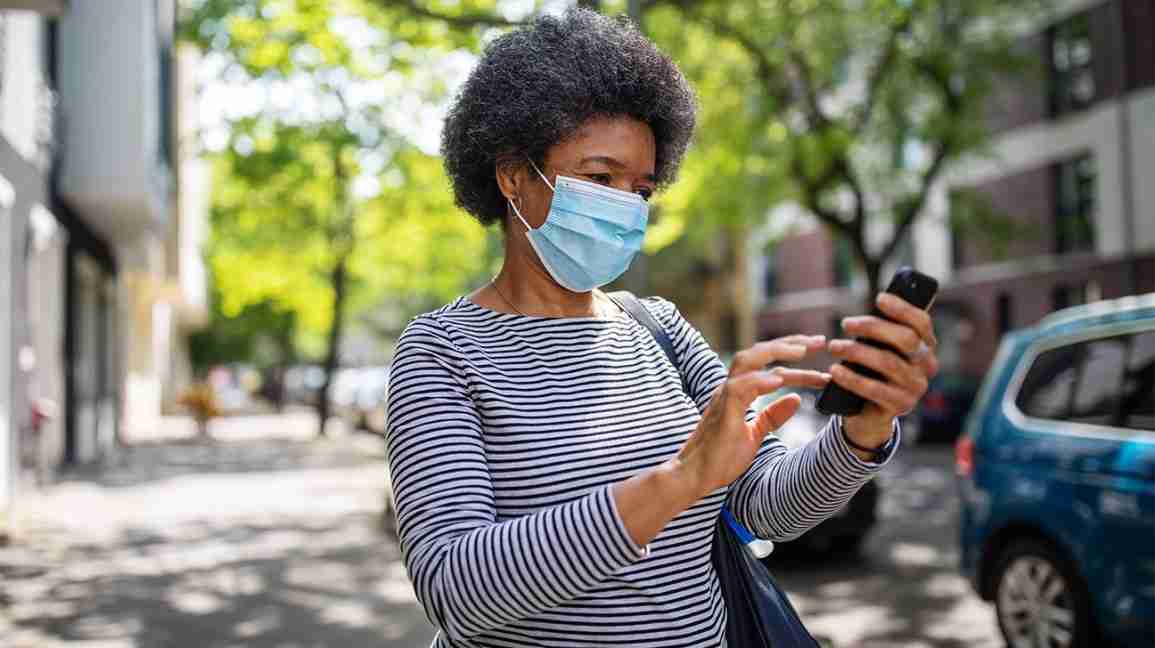
- New research shows that the most effective homemade face masks are those made with tightly woven fabric and providing a good seal along the edges.
- Bandanas were not found to be effective.
- N95 masks need to be properly fitted and should be reserved for those who need them.
- Surgical face masks are another effective option in areas where they’re readily available.
All data and statistics are based on publicly available data at the time of publication. Some information may be out of date.
Since the start of the COVID-19 pandemic, health agencies in the United States have recommended face mask usage to limit the spread of the novel coronavirus.
Since there isn’t enough medical-grade personal protective equipment to go around, many Americans have sewn their own fabric masks or simply used a bandana.
While it’s understood that some level of protection is better than none, there hasn’t been much information on the effectiveness of these homemade masks.
A new study, published today in the scientific journal Physics of Fluids from AIP Publishing, sheds new light on how the materials and construction of a face mask can impact its effectiveness.
“All of the major health agencies have now issued recommendations for the general public to use some sort of face covering, but there are no clear guidelines on the types of material or designs that should be used,” explained Siddhartha Verma, PhD, the study’s lead author who also serves as assistant professor in the department of ocean and mechanical engineering at Florida Atlantic University’s College of Engineering and Computer Science.
“While there are a few prior studies on the effectiveness of medical-grade equipment, we don’t have a lot of information about the cloth-based coverings that are most accessible to us at present, given the need to reserve medical-grade supplies for healthcare workers,” Verma told Healthcare Website.
Dr. Teresa Amato, director of geriatric emergency medicine at Northwell Health, told Healthcare Website that even as experts scramble to understand a pandemic that was virtually unheard of 6 months ago, mask wearing is a no-brainer in terms of decreasing transmission.
“It’s especially true with the more people you have wearing a mask,” she explained. “If you are infected and you wear a mask, you will decrease the likelihood of transmission. You’re wearing it to protect the people around you and you’re also wearing it to protect yourself from getting it. It’s really important to emphasize that more people wearing masks will decrease transmission overall.”
When it comes to specific masks, they can range from a simple folded bandana to hand-sewn cloth masks to N95 respirator masks.
While N95 masks provide a high level of protection, they aren’t a realistic option for most people, as they should be earmarked for frontline workers. Amato also points out that they aren’t exactly a one-size-fits-all option.
“N95 masks need to be fitted, and the wearer needs to be fit-tested to make sure that it’s on there appropriately,” she said. “Otherwise, wearing one is actually not very useful. So we’re not talking about the N95, we’re talking about either surgical masks or cloth masks.”
Verma and his team sought to find out which non-N95 masks would be most effective.
He said that the simplest masks — either a bandana or handkerchief — were virtually ineffective.
“I was a bit surprised to see how much leakage could occur through the bandanas and folded handkerchief masks we tested, even through multiple folds of the cotton fabric,” he said.
Ultimately, Verma and his colleagues determined that the most effective homemade masks were those that were well-fitted with multiple layers of quilting fabric.
Cone-style masks also worked well.
“Quilting cotton, with two layers stitched together, turned out to be the best in terms of stopping capability,” said Verma. “For minimizing the chances of transmission, it is important to use masks made of good quality tightly woven fabric, as well as mask designs that provide a good seal along the edges without being uncomfortable.”
Amato says another useful mask option, for those who can obtain them, are simple surgical masks.
“In the beginning, we were kind of holding onto those for healthcare workers, but now we have a good supply of them,” she said. “They’re probably the most comfortable to wear. They’re very lightweight and they afford good protection.”
Even the most effective face masks are not the be-all and end-all in terms of avoiding transmission.
“It’s important to understand that face coverings are not 100 percent effective in blocking respiratory pathogens, which is why it’s imperative that we use a combination of social distancing, face coverings, handwashing, and other recommendations from healthcare officials until an effective vaccine is released,” said Verma.
Amato agrees, adding that it’s important to be mindful of the highest risk scenarios for transmission — primarily large-scale gatherings in an enclosed space.
Certain interactions, including yelling and singing, also have the potential to spread aerosol droplets farther than 6 feet.
“Limiting interactions is really how we’ll stop the spread and get back to normal faster,” said Amato. “If you look at areas that are experiencing a spike, you can often trace it back to practices like sitting in a bar while wearing no mask.”
Verma concludes with the hope that this research will help inform people on the best practices for mask wearing.
“We have witnessed some aversion to using face masks, and hopefully the study will help convey that using masks is primarily an effort to protect the most vulnerable members of our society — the elderly or people with underlying health conditions,” he explained. “This is crucial since current estimates suggest that 1 in 3 infected people do not show overt symptoms, and could potentially infect such vulnerable individuals inadvertently.”